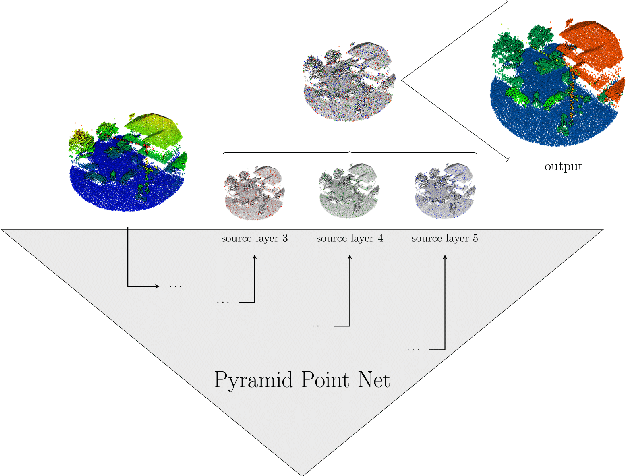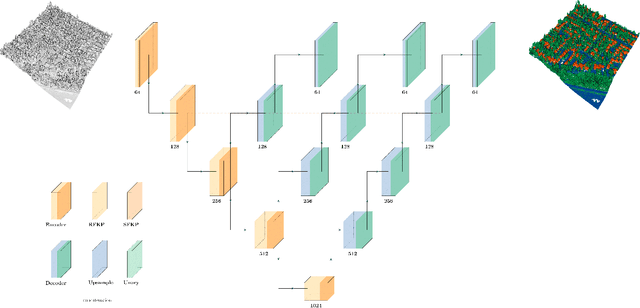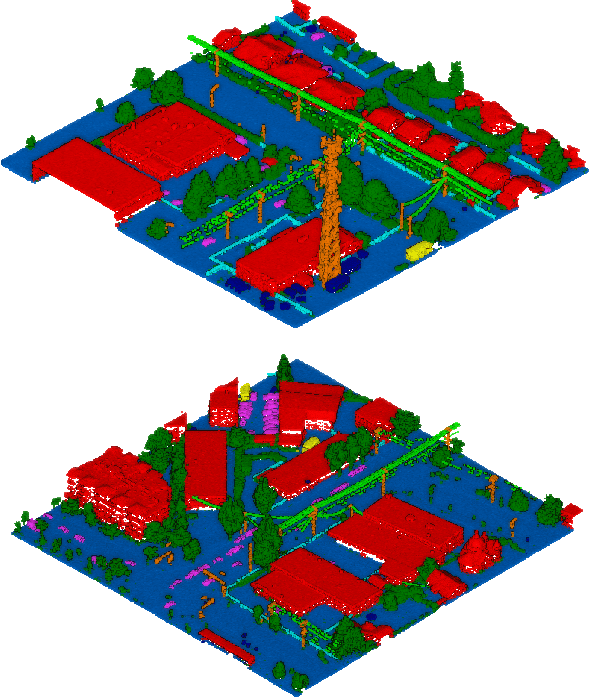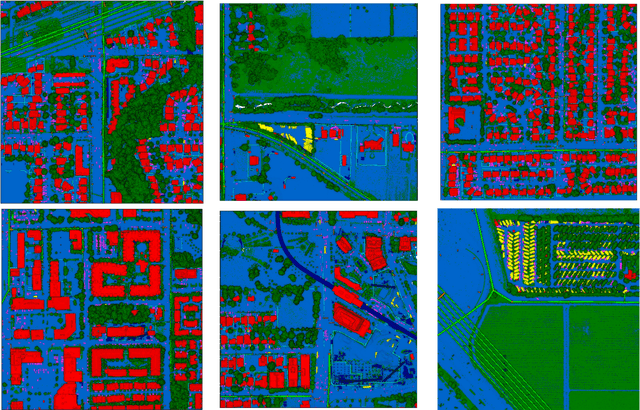Quinn Graehling
Pyramid Point: A Multi-Level Focusing Network for Revisiting Feature Layers
Nov 23, 2020



Abstract:We present a method to learn a diverse group of object categories from an unordered point set. We propose our Pyramid Point network, which uses a dense pyramid structure instead of the traditional 'U' shape, typically seen in semantic segmentation networks. This pyramid structure gives a second look, allowing the network to revisit different layers simultaneously, increasing the contextual information by creating additional layers with less noise. We introduce a Focused Kernel Point convolution (FKP Conv), which expands on the traditional point convolutions by adding an attention mechanism to the kernel outputs. This FKP Conv increases our feature quality and allows us to weigh the kernel outputs dynamically. These FKP Convs are the central part of our Recurrent FKP Bottleneck block, which makes up the backbone of our encoder. With this distinct network, we demonstrate competitive performance on three benchmark data sets. We also perform an ablation study to show the positive effects of each element in our FKP Conv.
DALES: A Large-scale Aerial LiDAR Data Set for Semantic Segmentation
Apr 14, 2020



Abstract:We present the Dayton Annotated LiDAR Earth Scan (DALES) data set, a new large-scale aerial LiDAR data set with over a half-billion hand-labeled points spanning 10 square kilometers of area and eight object categories. Large annotated point cloud data sets have become the standard for evaluating deep learning methods. However, most of the existing data sets focus on data collected from a mobile or terrestrial scanner with few focusing on aerial data. Point cloud data collected from an Aerial Laser Scanner (ALS) presents a new set of challenges and applications in areas such as 3D urban modeling and large-scale surveillance. DALES is the most extensive publicly available ALS data set with over 400 times the number of points and six times the resolution of other currently available annotated aerial point cloud data sets. This data set gives a critical number of expert verified hand-labeled points for the evaluation of new 3D deep learning algorithms, helping to expand the focus of current algorithms to aerial data. We describe the nature of our data, annotation workflow, and provide a benchmark of current state-of-the-art algorithm performance on the DALES data set.
 Add to Chrome
Add to Chrome Add to Firefox
Add to Firefox Add to Edge
Add to Edge